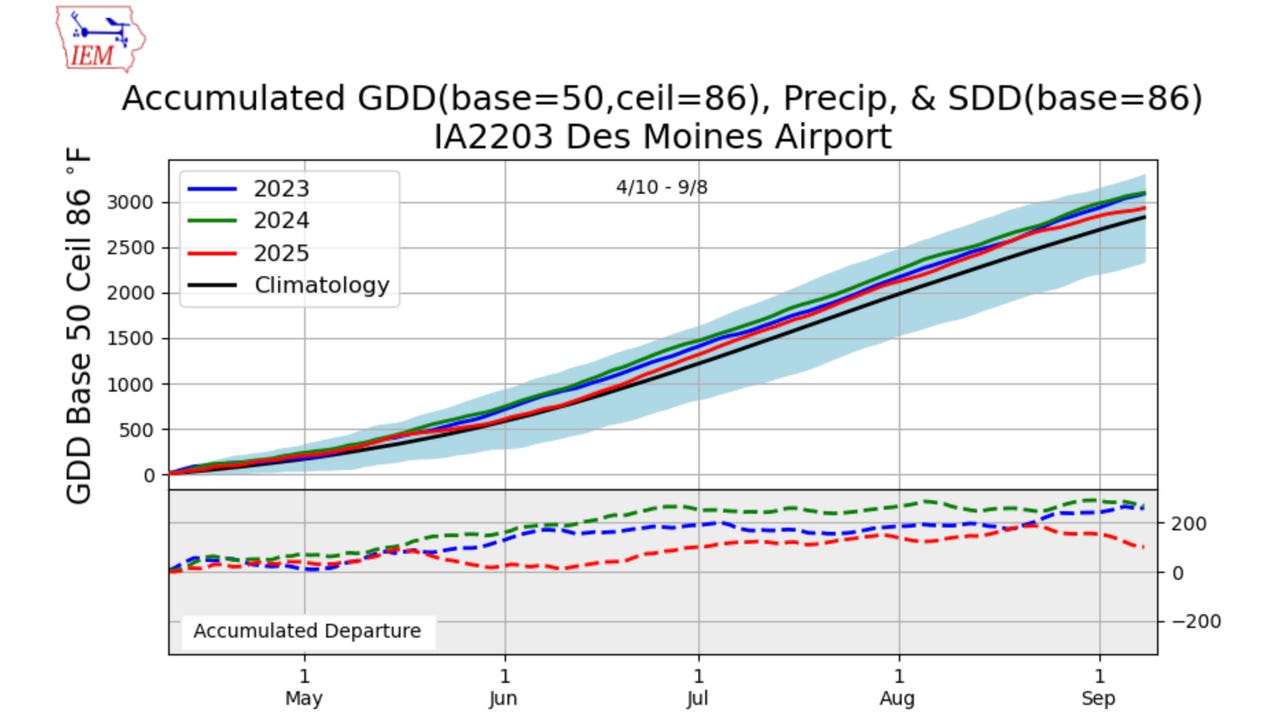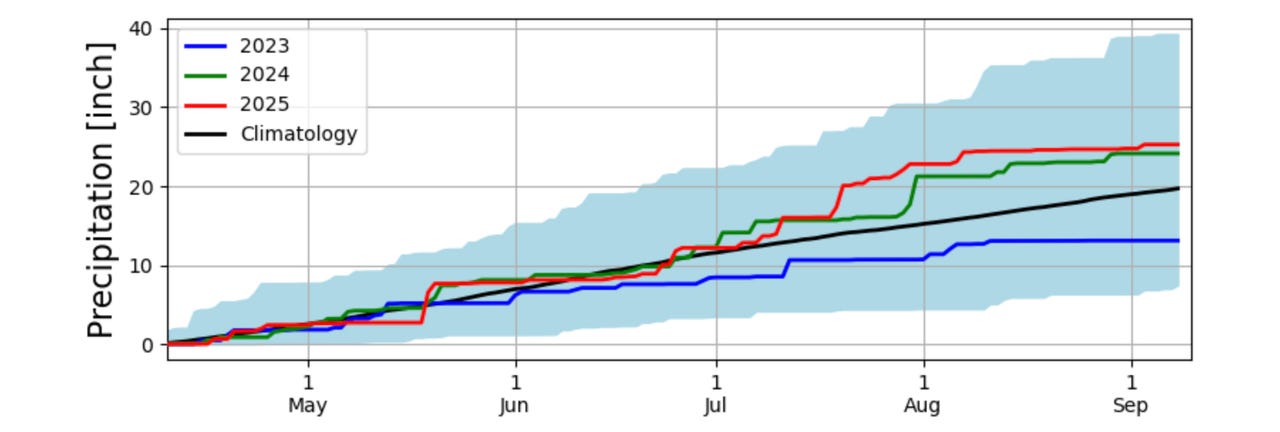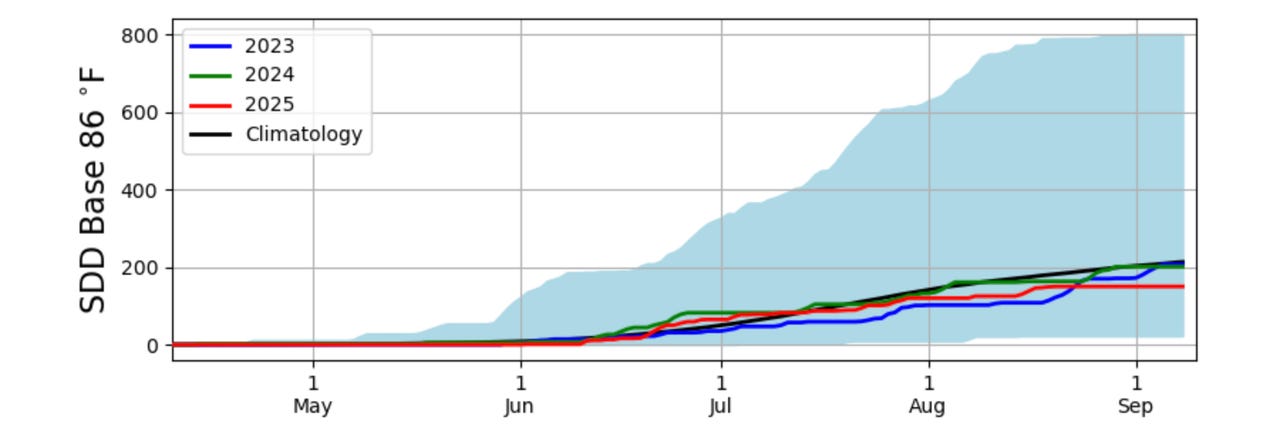For the fifth consecutive year, I joined my colleague Patrick Hatting, Iowa State University Extension farm management specialist for central Iowa, and checked several Polk County cornfields as a part of our “Polk County Yield Tour.”
After R3 (milk stage) is a great time to venture into cornfields to make yield estimates, as kernel abortion is less likely, and plant stress will result in reduced kernel size or fill rather than kernel loss. In addition to performing yield checks, walking late reproductive-stage corn provides a good opportunity to check the field for other things, such as stalk rot or other standability issues. It’s also a good time to check for foliar disease, especially if you left any test strips of untreated vs. fungicide-treated areas of fields.
These late-season checks can be invaluable to plan for harvest and future growing seasons. While harvest is already well underway, I wanted to share the results of our tour.
Hatting and I visited 16 cornfields in Polk County on Sept. 8 to do yield estimates. In each field, we arbitrarily chose a location sufficiently far from the field edge or any confounding areas (waterways, demonstration plots, etc.).
This year was one of the most interesting due to the sufficient (or excessive) summer moisture and the uncertainty regarding what southern rust and other stressors would do to the crop.
While other methods exist, the most traditional method of making yield estimates is the “yield component method.” If you’re interested in full details on estimating yield using this method, check out this ICM Encyclopedia article on the topic.
Remember that yield estimates are just that — yield estimates. I failed to post last year’s estimates to this blog (sorry!), but you can see them in this thread on X (formerly Twitter). In 2024, we estimated 222.6 bushels per acre as the county average and waited until June to learn that the USDA Risk Management Agency reported the actual average at 226.5 bushels per acre.
Lowest estimate in 3 years
While yield estimates varied greatly from field to field, the average yield across our 16 estimates was 202.5 bushels per acre. The low yield estimate was 174 bpa, and the high was 254 bpa, but the majority of yields were below 220 bpa.
This is the lowest yield estimate we’ve made in three years. Our estimate differs substantially from some other Polk County estimates I’ve heard, but we will know what the final RMA numbers are next summer.
According to a Des Moines weather station, the growing season started out similar to 2024. However, we had an overall cooler June that slowed our growing degree days (GDD) accumulation compared with the last two years. In mid-July, the rainfall far surpassed other recent years, though lack of rainfall in August stalled accumulation.
By early September, total GDD accumulation was slightly behind the past two years, and total rainfall was similar to 2024 but ahead of 2023. The most notable difference I can see is that we appear to have had a cooler early summer and a warmer late summer than in 2024, combined with more frequent rainfalls.
While yields are rolling in, the full image of what the weather and southern rust pressure did has yet to be determined.
The following charts from Iowa Environmental Mesonet show GDD accumulation, precipitation levels and stress degree days accumulation in Des Moines from April 10 to Sept. 8.



For further reference, see the 2021 article here, the 2022 article here, my 2023 X posts, the 2024 article here, and contact your local Iowa State University Extension field agronomist to let them know about your corn yields!